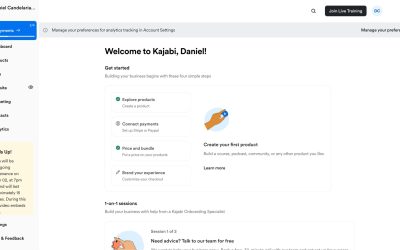7 Time Management Tips For Practice Owners
Do you have bad time management?
Do you find yourself “doing it all?” and having very little time for yourself?
If you’re a practice owner and you’re feeling scattered, worn out, and in need of better time management skills, this post is for you.
The good news is, by restructuring your time, you can actually set some great boundaries (that aren’t always easy!) but will enable you to spend your time in ways that align with your priorities and begin to let go of some things that just aren’t worth it.
Wondering what this could look like for you?? Keep reading!
7 Time Management Tips For Practice Owners
1. Block Off Your Time
You have time blocked off for client sessions, but do you have specific times on your calendar blocked off for things like “create weekly newsletter” “write blog post” or “content dump session”.
The truth is, we can push these items into an imaginary calendar in our minds, thinking we’ll just “find the time” and in the end, they rarely end up getting done, or if they do it’s a time crunch situation that’s stressful.
Creating time blocks is one of the best ways to avoid burnout and reach the “flow zone” with your work. When our brains are constantly switching from one task to another, we’re really just doing a lot of things not well. When we can focus on one task at a time, we will end up doing one thing, but doing it well.
Another tip is grouping blocks of creative work together and more admin tasks together if you can. This will help your brain to stay in the same “mode”, increasing productivity.
So go ahead and create these tasks as set appointments just like your client sessions, and KEEP them!
2. The ‘Content Dump’
Coming up with new ideas for content creation can be tough when you’re sitting down to actually write the blog post or create a new video.
Instead of coming up with an idea on the spot, try blocking off time to have a 30 minute to an hour ‘content dump’ session where you sit down and write down every idea that comes to you.
Ideally, putting these different ideas into ‘buckets’ that have to do with your brand is helpful to make sure you’re hitting the topics you specialize in.
Examples of buckets could be “Depression Tips” “OCD Help” “Teen Therapy” etc.
Once you have these categories set, you can begin to add whatever comes to mind from moments of inspiration from your sessions, a training you recently did, etc.
Then, next time your calendar tells you it’s time to write a new blog post, you can go to your content buckets and pull from whichever one you like. This makes the creative process much easier and will lead to less burnout!
3. Create SPACE
Just like your work blocks, you NEED blocks of time to NOT work.
Yes, yes, it’s difficult when your to-do list seems neverending, but if you’re wanting to optimize your time management skills, this is just as important as working hard.
You can’t sustain creativity and progress in your practice without creating space in your life to do things like go on a walk, take 15 minutes to breathe, exercise, or say no to something in order to recharge and have some fun.
All you really need is 15 minutes or more a day to take a break and regroup. You may be surprised how much more motivated and inspired you’ll be when you do this!
4. Your Time=Your Values
Have you taken the time to get to know your top values? Usually, if we can pinpoint our top 3-5 values in life it can help us in making decisions that align with what matters most to us and letting go of what doesn’t.
If one of your top values is health and you’re working late into the night and waking up early to work more, chances are you’re not living into your values.
There are seasons of life where we may need to work more to be able to accomplish a task or reach a goal, but this doesn’t need to be the “norm”.
If your values are getting thrown to the wayside due to feeling the need to always be working, it’s time to reassess where you’re allocating your time.
Take a good hard look at your values and see where you need to change up your schedule to align with what matters most to you.
If you’re wanting more help with creating a practice you love, listen to our podcast where John talks about this in more detail.
5. Intense Focus
This is what we like to call the ‘flow zone’.
If you’re wanting to optimize your time management skills then this one is big!
The ‘flow zone’ is basically when your brain is fully engaged and focused without distraction. A good example of this would be when you’re in session with a client and you’re fully immersed in what they’re saying, and fully present..aka the flow zone.
Treat your other areas of work in the same way. Turn off notifications when you can, and put your phone face down. Find a quiet environment and get what you need around you before you sit down (water, coffee, pen, charger, etc.)
Then, set a timer for 20-30 minutes and see if you can focus on just one thing for that entire time without being distracted.
You may notice it becomes easier and easier to go for longer periods of time staying focused once you’re in the ‘flow zone’…getting started is the hardest part!
Once you’ve reached your time goal for focusing, feel free to take a quick break and walk around or get some water, then get back to the timer again.
These periods of “intense focus” will help you get more done, faster, and with a higher quality end product.
6. Book Clients Around Your Ideal Schedule (and Fee!)
As a practice owner, you have the ability to control the times you offer your clients.
Although every situation is unique, don’t just bend to every time the client wants.
Strategically set up your availability to match what works best for you and doesn’t lead to burnout.
If seeing clients back to back and having a day off after works best for you, really try and stick to that schedule.
If seeing a handful of clients spread out with breaks in between works best for you, offer those times only.
Your schedule should work for you, not the other way around!
If you want practical tips on how to create a schedule you feel good about, give our podcast a listen where John talks about how to do this in more detail.
Wanting to know how to price your sessions so you can see fewer clients for the same income??
Watch our video here where John talks about how to set your session fee.
7. Know Your Capacity
Just because you have 30 “open” slots in your calendar doesn’t mean you need to fill them all with clients.
We get it, you want to make the most of your availability and be able to make money, but if you’re feeling worn out by client sessions, you may want to look into diversifying your income streams instead of relying solely on therapy sessions.
Curious how to do this when you already feel overwhelmed?
Watch our video where we explain how!
We hope this post was helpful in helping you think about how to improve your with time management as a private practice owner and implement boundaries enabling you to thrive and create a practice you love!
Want more? Work with me!
-PPW



